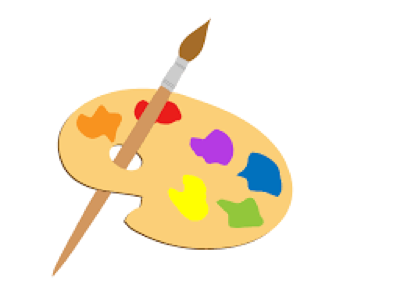- Home
- About Us
- Curriculum Subjects
- Art
Art
Back Intent:
Intent:
At Worsley Bridge Primary School, we believe that the teaching and learning of Art and Design is an integral part of each pupils learning journey, stimulating creativity, imagination, and ingenuity. It is our firm intent, through a structured and engaging approach, to develop every pupils fundamental artistic skills, promote self-expression, and foster and instil a lifelong passion for the arts.
It is our aim to teach all children the fundamental skills, techniques, and concepts to allow them to independently explore and create their own unique artwork using a wide variety of mediums. At Worsley Bridge, we aim to empower all pupils to study and discover great artists that will allow them to explore their own and other’s cultural heritages. We also ensure that through our teaching of Art and Design, pupils learn about the impact and importance that art has not only on life in the present time, but historically as well and how it enriches lives and deepens critical thinking.
At Worsley Bridge Primary School, we believe that our pupils should be afforded the time and space to explore new techniques and ideas and be creative in an environment where they happily do so, without the need to be perfect.
We use Kapow Primary’s Art and Design scheme of work which aims to stretch and inspire children, support the development of their knowledge and provide them with the teaching to become proficient in a wide range of artistic skills. The scheme is written by a team of experts and is designed to give children every opportunity to develop their ability, nurture their creativity and learn about the heritage and culture of the British Isles and around the globe. Kapow Primary’s scheme enables pupils to achieve the National Curriculum end of Key Stage attainment targets and has been compiled to fully cover the National Society for Education in Art and Design’s progression competencies.
Worsley Bridge Primary’s Aims for Art and Design:
At Worsley Bridge, we believe that Art and Design offers numerous opportunities for all our pupils:
- To foster a love, enjoyment and appreciation of art and design and to provide opportunities for studying a wide range of historical and contemporary art.
- To experience, explore, celebrate and understand the work of artists and designers from around the world, discussing their work, developing their artistic vocabulary and then applying this to their own artwork.
- To be exposed to a broad and balanced range of art and to show progression throughout their time at Worsley Bridge Primary School.
- To develop their skills in observation, investigating, responding to and recording the world around them using a range of different mediums.
- To present the development of their learning, ideas, reflections and skills through the use of a sketchbook. #
- To develop their imagination and creativity through a range of complex activities
- To extend and enrich the wider curriculum through art and design.
- To develop their mastery of art and design using a wide range of techniques and mediums including pencil, pastel, paint, charcoal, clay, collage, printing, weaving and modelling.
Implementation:
At Worsley Bridge Primary School, Art and Design is an integral part of the children’s learning journey and we are dedicated to its high-quality teaching. This is implemented through:
- A clear, concise whole school approach to the Art and Design curriculum which promotes progression from EYFS to the end of Key Stage 2.
- Well planned and resources units providing children with meaningful, enriching, hands-on experiences.
- Pupils are introduced to a range of artists, crafts people and designers, both modern and historical, from around the world helping to foster an appreciation of creativity and achievement and increase the cultural capital from which they can draw on in the future.
The Kapow Art scheme of work is designed with four strands that run throughout.
These are:
- Making skills
- Formal elements (line, shape, tone, texture, pattern, colour)
- Knowledge of artists
- Evaluating  
Through Kapow Primary’s Art and design scheme of work and the adaptation of this, these strands are revisited in every unit. In our Art and design skills and our Formal elements of art units, pupils have the opportunity to learn and practice skills discretely. The knowledge and skills from these units are then applied throughout the other units in the scheme.
The curriculum is designed following a spiral approach to Art and design with key skills and knowledge revisited again and again with increasing complexity. This enables a clear sense of the sequence of learning and builds upon the prior learning of pupils.  While we give pupils of all abilities opportunity to develop their skills, knowledge and understanding, we also build planned progression into the scheme of work, so that there is an increasing challenge for the pupils as they move up through the school.
The curriculum also develops pupil’s knowledge and understanding of key artists and art movements through the Every picture tells a story units and links to artists through practical work. Our units fully scaffold and support essential and age-appropriate sequenced learning and are flexible enough to be adapted to form cross-curricular links or follow the needs and interests of the class to make more meaningful links. Creativity and independent outcomes are robustly embedded into the units, supporting students in learning how to make their own creative choices and decisions, so that their art outcomes, whilst still being knowledge-rich, are unique to the pupil and personal.
Our progression document covers both skills and knowledge but has a focus on the children knowing more and remembering more as they progress through school.
Impact:
At Worsley Bridge Primary School, we measure the impact that Art and Design has had for all pupils by:
- Determining to what extent objectives have been met within each lesson and at the end of each unit.
- The use of summative assessment of the pupils learning.
- Images of the pupils hands on learning.
- Pupil voice across the school.


